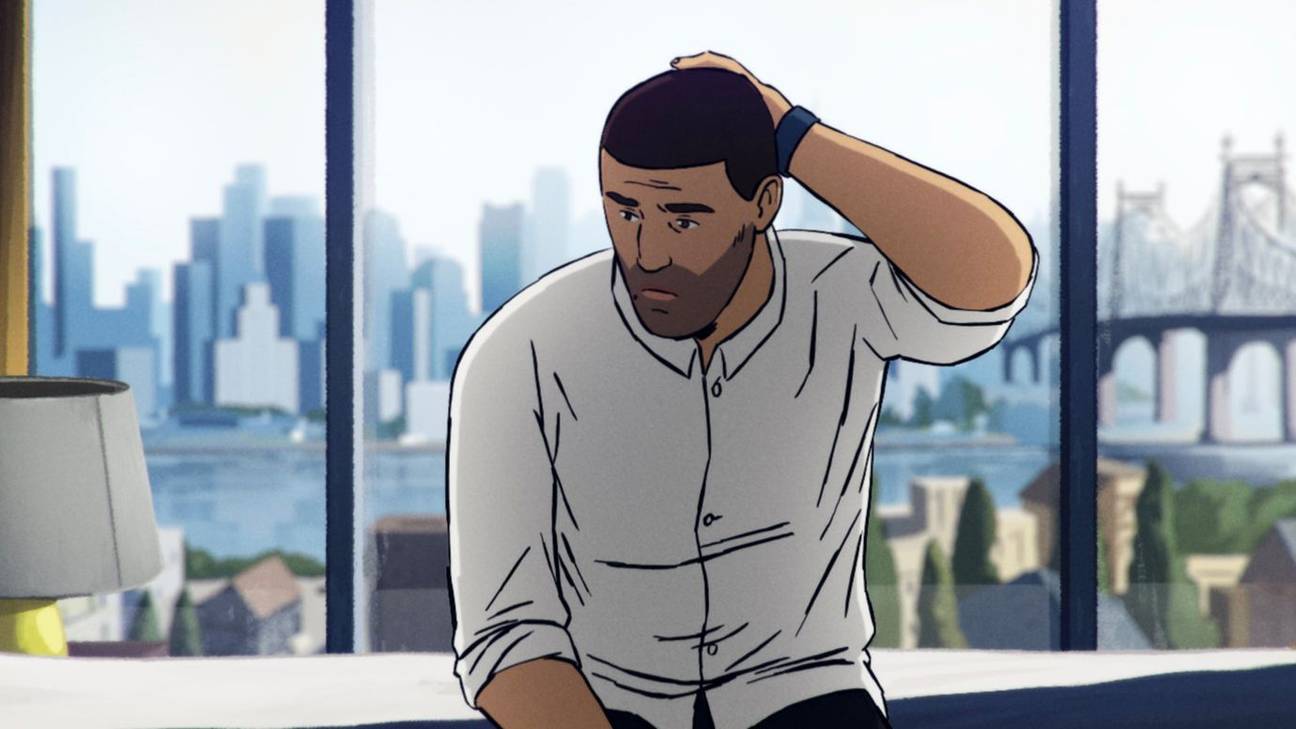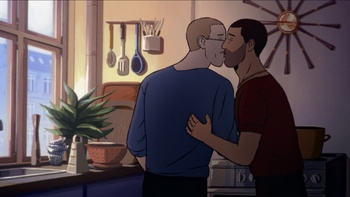After a triumphant tour at the festivals and a historic trio of Oscar nominations, Flee is finally coming to the cinemas in Brussels. Don't let this refugee story escape.

The Oscar-nominated film 'Flee' is essentially a testimony, of Amin Nawabi’s traumatic flight, his troubled past and his intimate secret.
Film of the week: 'Flee'
The talk of the 2022 Oscars was Will Smith's slap but if you have room on your hard drive to remember one more thing, let it be the three Oscar nominations for Flee. Never before has the same film been on the shortlist for the Oscars for best non-English-language film, best animated film and best documentary.
Just like in Waltz with Bashir by Ari Folman or Another Day of Life by Raúl de la Fuente and Damian Nenow, the combination of documentary and animation works wonderfully well. Danish director Jonas Poher Rasmussen convinced a friend from high school to do his story.
Just like in 'Waltz with Bashir' by Ari Folman or 'Another Day of Life' by Raúl de la Fuente and Damian Nenow, the combination of documentary and animation works wonderfully well
Amin Nawabi is now a successful academic in demand by prestigious American universities who is no longer ashamed of his homosexuality. In the late 1980s, as a child who sometimes wore girls' clothes and had a crush on Jean-Claude Van Damme, he had to flee Kabul. The Taliban had seized power by driving the Russians out of Afghanistan with a little help from the Americans. When his father was arrested, he, his mother, brother and sisters flew to Moscow. There they experienced the implosion of communism and the opening of the first McDonald's, but most of all they had to keep out of the hands of corrupt, aggressive, abusive police officers. People smugglers wanted a fortune for perilous passages. The minor Amin was cut off from his family and eventually ended up in Denmark.
Flee is essentially a testimony. Hesitantly, Amin tries to remember the things he had to endure. Sometimes he gets it wrong. Memory is fallible, the traumas he has suffered can never be fully healed. The sadness in his voice speaks volumes.

'Flee' comes to a hopeful conclusion: Amin finds a home.
By turning the documentary into an animated film, director Rasmussen is ensuring Amin anonymity. The man has no desire to be known as “The Refugee”. There are other advantages to animation too. Kabul in the 1980s or Moscow in the 1990s can simply be drawn. Depending on what the scene requires, Rasmussen changes his drawing style. Complex, high-spirited emotions, for example, are expressed in a more abstract graphic style. Inserted archive images, on the other hand, remind us of the painful reality of the historical events that had a huge impact on Amin's life.
Flee not only reconstructs the traumatic flight, but also incorporates the fact that Amin kept his troubled past a secret from everyone for years, even friends and loved ones. Breaking the silence puts an end to the flight from that indelible past. Despite the dull misery, the poignant film thus comes to a heart-warming, hopeful conclusion. Amin finds a home. But there are still 26.6 million refugees left.
FLEE
DK, dir.: Jonas Poher Rasmussen
Read more about: Film